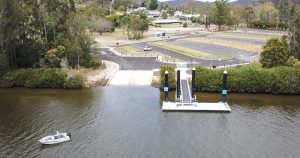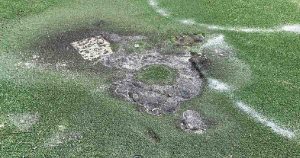Contributed by Greta Wickham Birdbaths
The Galston District Garden Club is postponing the meeting in August due to the current Covid restrictions. We usually meet on the 2nd Wednesday of the month, but we are predicting strict numbers for large gatherings will be the order of the day in August. Hopefully, if we all listen and adhere to the advice, we will be back to meeting in September.
An advantage to being a member of our club apart from the camaraderie among other keen gardeners are the mailouts passed on to members from Gardening Clubs Australia.
One of this month’s mail outs referred to the importance of backyard birdbaths.
Birdbaths are a familiar sight in Australian gardens, but surprisingly little is known about the precise role they play in the lives of birds.
In a dry continent such as Australia, bird baths may be vital to supporting an otherwise stressed bird population. A study undertaken by the Deakin and Griffith Universities in 2014 revealed so far that birdbaths are much more than just ornamental splash pools for feathered visitors. They are also a site where animals socialise, and intense rivalries play out. Human choices such as the design of the birth bath, where it is located, and how often it is cleaned can impact birds.
The majority of participants in the study monitored the traditional pedestal or elevated bath type. Cats are a considerable risk to garden birds, so elevated baths are a good idea. They help keep birds safe from cats.
Baths should be situated near plants so small birds can have refuge if they are disturbed. Stones or rocks in the centre of the bath can give smaller birds a place to perch while bathing.
Birds need to groom their feathers daily, so don’t assume they only visit birdbaths on hot summer days.
Birds need baths in winter too. It can take time for birds to find a new water source, but they will find it. Other types of baths, such as pots or saucers on the ground, can provide water for a range of wildlife species.
A clean bath is a good bath. Like all bathrooms, the garden birdbath needs regular cleaning. A dirty bath can spread disease, and birds can be susceptible to infection where many species and individuals congregate at communal watering stations. For example, infected parrots can spread beak and feather disease to other parrots when they bathe and drink together. It is essential to refill and clean the baths in summer as well as winter.
Offering water in your backyard will attract more birds than just food sources since birds that would not usually visit feeders can be tempted by water features. Any water is an improvement on a dry backyard, but moving water will attract more birds because the motion catches their eye, and they can hear any dripping, sprinkles or splashes. Adding a dripper or mister accessory to a standing bird bath adds motion easily. Birdbaths are the fastest and easiest way to add water to your backyard bird habitat.
The Galston District Garden meets in the Community Hall, 37 Arcadia Rd, Galston, at 7.30 pm every 2nd Wednesday of the month.
For further information regarding the club, visit www.galstongardenclub.com.au or email: galstongardenclub@gmail.com.





